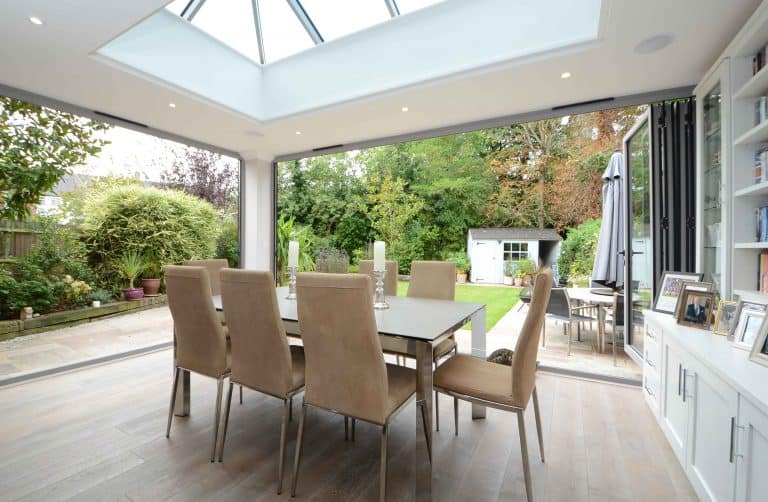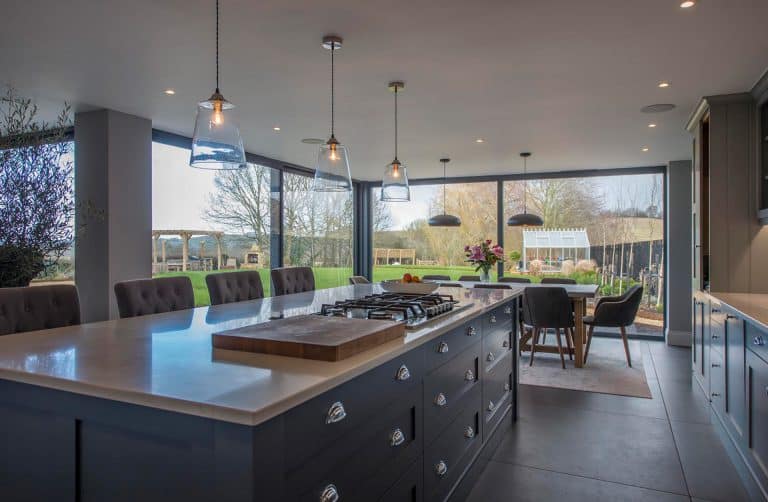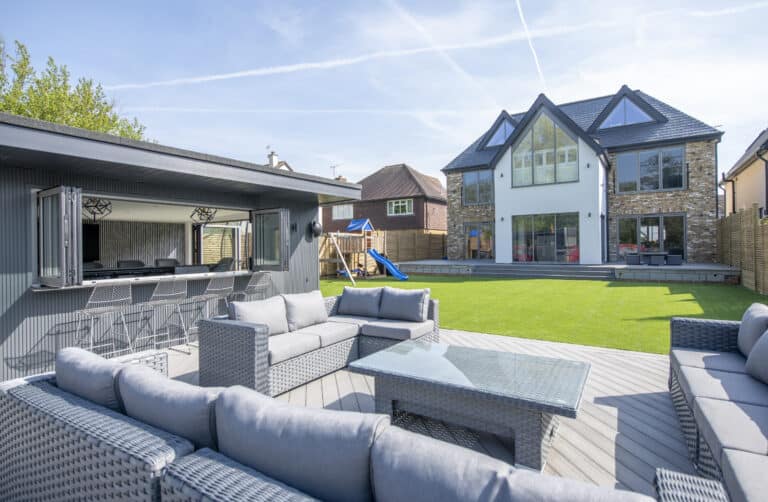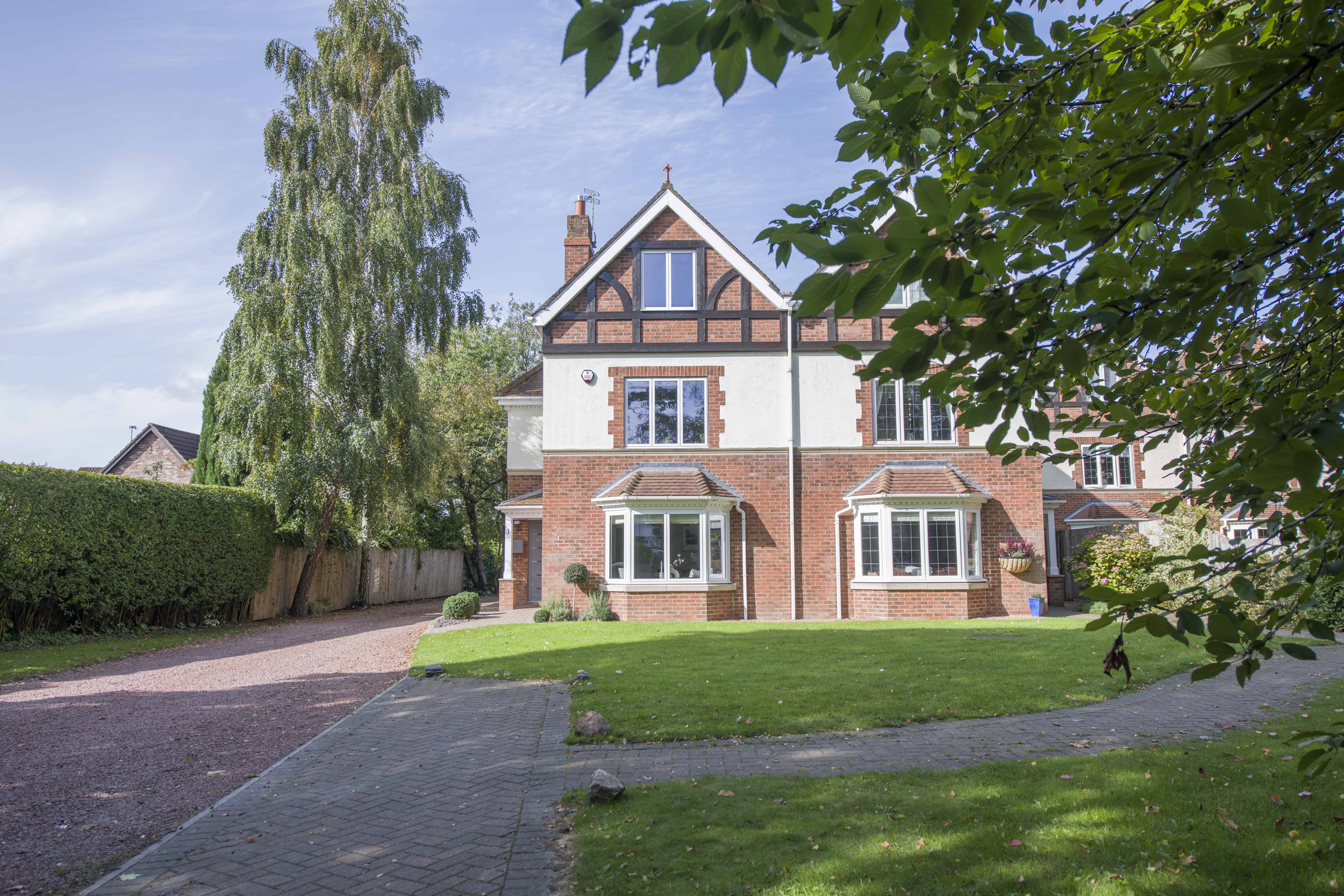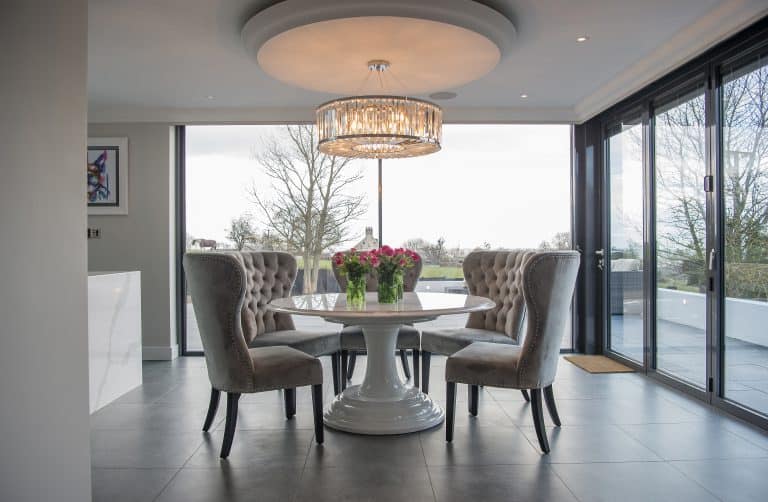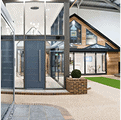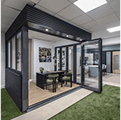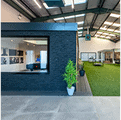Roof Lantern vs Skylight: Which Should You Choose?
When it comes to letting more light into your home, the correct window choice is key. But while standard vertical windows have their place, and can certainly welcome plenty of natural light into a room, for maximum illumination, you might want to consider a roof lantern or skylight.
Each capable of flooding a space with morning and evening rays, roof lanterns and skylights are the most common types of glass roof systems used to brighten up new home extensions or previously dark rooms – which is exactly why we’ve included them in our detailed, downloadable product brochure!
But what‘s the difference between the two, and is one type of roof light better for your home than the other?
To help you understand which option might be better suited for your space and ensure you can make the right decision when upgrading your property, we’ve broken down the key differences between roof lanterns and skylights, as well as the pros and cons of both.
WHAT IS THE DIFFERENCE BETWEEN A ROOF LANTERN AND A SKYLIGHT?
Despite both being a form of roof light, skylights and roof lanterns bear some striking differences that make them better suited for certain property types.
To begin with, skylights are widely considered the simpler of the two. Fitted directly onto a roof so that they match its angle, they can be installed on flat and tilted surfaces without issues.
As a result, skylights are more commonly found in contemporary homes, making excellent roof features on top-floor flats and more modern home aesthetics, especially when your home conforms to a non-traditional layout.
Roof lanterns, on the other hand, quite literally stand higher than their skylight counterparts. Formed of multiple panels, lanterns are fitted at a raised angle above a flat roof, typically in a prism, pyramid, or rectangular shape for added height.
While roof lanterns can be used in modern homes, they’re also very well suited to more traditional properties. This is thanks in part to their popularity during the Edwardian period, being used to illuminate enclosed stairwells and as a key component in the orangeries that started to replace conservatories.
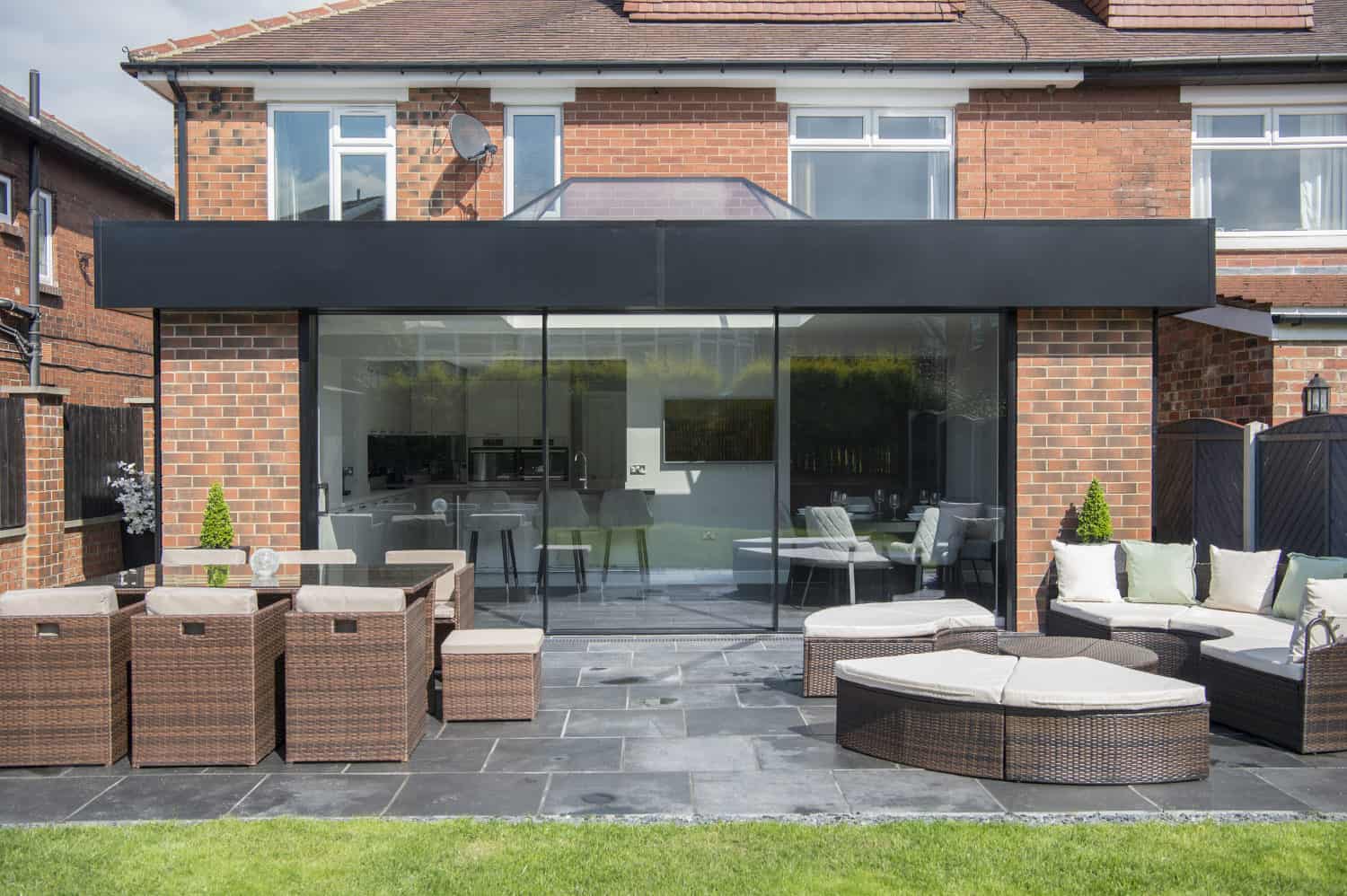
WHICH ROOF GLAZING SYSTEM IS BEST FOR YOUR HOME?
When it comes to choosing a roof lantern or a skylight, there are a number of different things you should look to consider to ensure that you’re investing in the right setup for your needs. Start by thinking about what you’re trying to achieve with your new lighting system – are you looking to make use of more natural light to save energy or do you want to be able to see the open sky at night?
Of course, you also can’t buy a glazed roof without considering the size and shape that you want your light centrepiece to be. But remember, bigger isn’t always better, and you shouldn’t neglect thinking about where you want your roof lights to go and what you want them to look like on the inside or out. Answering these questions will usually go a long way to determining what type of lighting system you’ll need, but knowing the pros and cons of both is also going to be a massive help.
WHAT ARE THE PROS AND CONS OF ROOF LANTERNS?
If a focal point is what you’re after with your new roof lighting system, then chances are that a roof lantern is the right choice for you. Providing a prominent addition to your home, the pros and cons of roof lanterns are characterised by the following:
- Letting in maximum light: Thanks to their raised position, open space, and additional glazing, roof lanterns are capable of taking advantage of sunlight throughout the day, including capturing those morning and evening rays for low light benefits.
- Reducing energy bills: Due to the introduction of more light in the morning and evening, lanterns are also a great addition for anyone looking to save on energy bills, as you won’t have your lights on all the time. They’re also well insulated, providing great thermal efficiency.
- Easy maintenance: Thanks to their unique size and shape, it is very easy to keep lanterns clean. Their raised shape allows water to run off rather than pool at the base of the window, and they can be easily cleaned from the outside when necessary.
- Bespoke in design: Finally, lanterns come in a variety of shapes and sizes, meaning they can be used to match any home aesthetic, both modern and classic alike.
Of course, with these benefits also come a few downsides, the most important of which include:
- A higher cost: Naturally, because lanterns provide greater height and light for your home, this typically makes them more expensive to install than skylights, so they’re not ideal for people on a budget.
- Limited installation options: Lanterns also require flat roofs for their installation and are thus limited to certain rooms of your home. This still means you can easily install them over kitchens and lounge areas, but they may not be well-suited for bedrooms or upstairs areas.
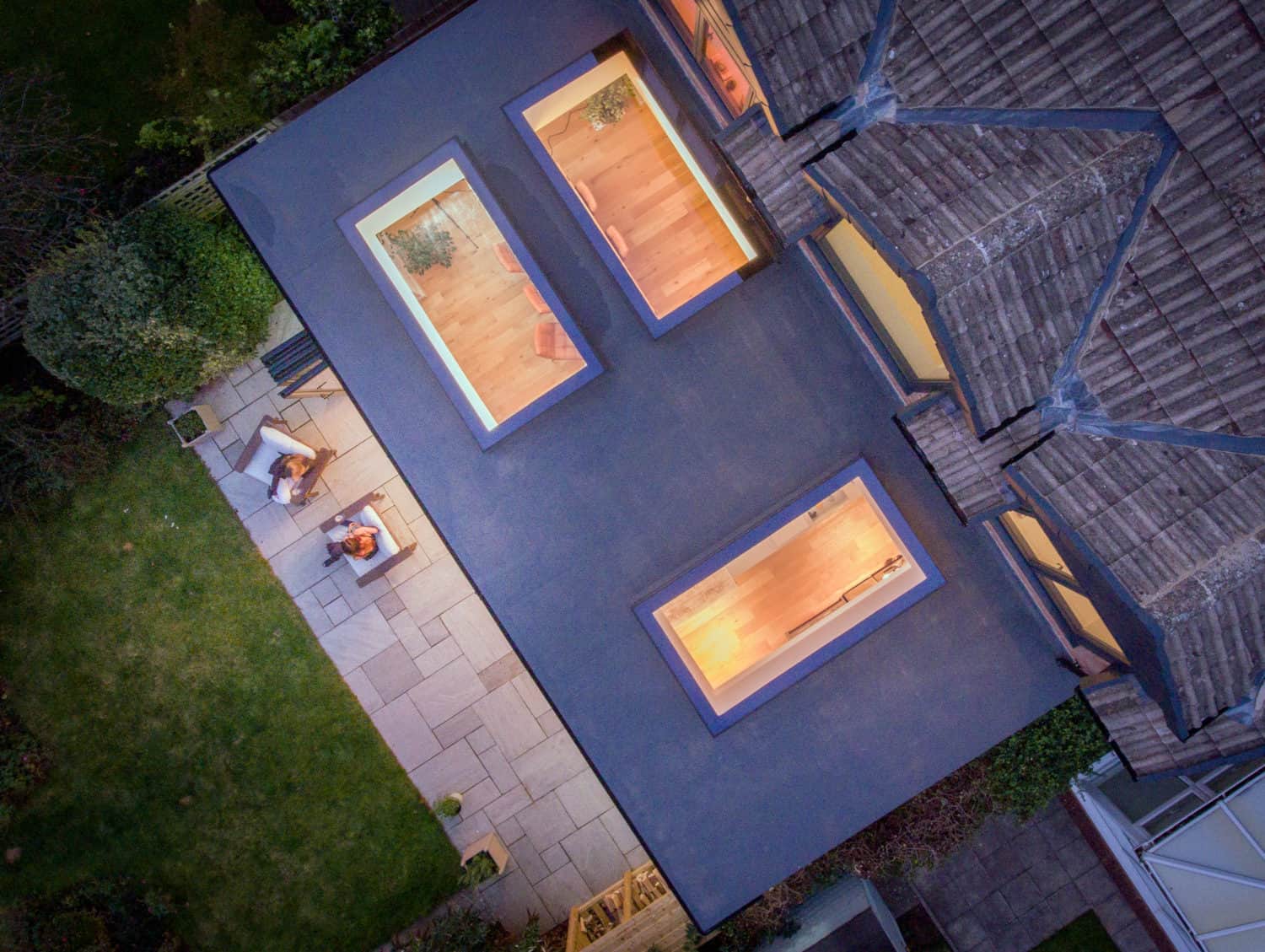
WHAT ARE THE PROS AND CONS OF SKYLIGHTS?
Now that we’ve covered the pros and cons of roof lanterns, what about their skylight counterparts? Much like lanterns, this type of glass roofing system comes with several benefits:
- Minimal frames: Although lanterns look impressive, their large size means they have more obvious frames. Skylights get around this problem by being seamlessly fitted into your roof, with as little frame on show as possible.
- Angled installation: While lanterns require a flat surface to be installed, skylights can be placed at any angle, meaning they can be precisely placed to capture maximum sunlight in the morning or afternoon.
- Cost-effective options: As skylights are individual, each one only being formed of a single pane, they’re almost always a more cost-effective installation option than a lantern for your roof, making them the better option for projects with a tight budget.
Still, even with these prominent benefits, there are still a few drawbacks that come with choosing skylights:
- Limited light exposure: As skylights can only ever face one side of your home, it goes without saying they’ll only be able to capture a certain volume of light per day, and typically can’t take advantage of low light levels in the morning and evening.
- Higher maintenance: Water can often build up on pitched roofs, especially if your skylights have a trim. Not only that but having skylights on pitched roofs can make them much trickier to clean.
With this information to hand you should now have a much better idea of which type of roof glazing is better suited for your home. But if you’re still unsure, then why not reach out to the experts at Express?
With decades of experience, our team is on hand to provide you with the advice you need to make the right decision for your home, and you can even visit one of our showrooms in person to see our full range of glass roof systems for yourself.
Don’t forget to visit the rest of our blog as well for more articles like this one, including our very own roof lantern buying guide.
